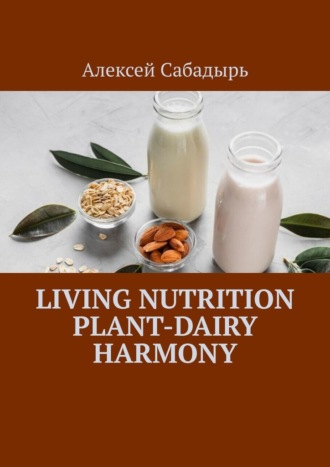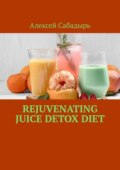
Алексей Сабадырь
Living Nutrition Plant-Dairy Harmony
© Алексей Сабадырь, 2024
ISBN 978-5-0062-2336-3
Created with Ridero smart publishing system
Chapter 1: Introduction to the Plant-Dairy Diet: Basic Principles and Benefits
In recent decades, a plant-based diet has become increasingly popular among people seeking a healthier lifestyle. This diet is based on the consumption of plant foods such as fruits, vegetables, grains, legumes, nuts, and dairy products such as milk, yogurt, and cheese. A plant-based dairy diet offers many health, environmental and animal welfare benefits.
In this book, we’ll explore the basic principles of a plant-based diet, discuss its benefits, and help you figure out how to incorporate it into your lifestyle.
Stages of development of a plant-dairy diet
The plant-based dairy diet has ancient roots and reaches deep into the history of various cultures. In different eras and in different parts of the world, people have followed a diet based on plants and dairy products. However, with the advancement of science and research, we have begun to understand the deeper aspects of this way of eating.
Basic principles of a plant-dairy diet
The basis of a plant-based diet is to eat foods that are rich in plant fiber, vitamins, minerals and antioxidants. It can be found in foods such as fruits, vegetables, nuts, seeds, grains and dairy products. Avoiding animal products in favor of plant-based alternatives helps reduce your intake of saturated fat, cholesterol and animal protein.
Benefits of a plant-based dairy diet
A plant-based diet offers many health benefits, including reduced risk of heart disease, diabetes, obesity, and improved immunity and overall energy levels. It also helps improve environmental sustainability and reduce harm to animals.
In this book, we will also look at real success stories of people who have switched to a plant-based diet and discuss the most common mistakes to avoid when switching to this way of eating.
A plant-based diet can be your key to health, sustainability and harmony with nature. Let’s explore this exciting path to a healthy lifestyle together!
Chapter 2: Food Variety: Which Foods to Eat in Your Diet
When it comes to eating healthy, variety is key. Variety not only helps you get all the nutrients you need, but it also makes eating more interesting and tasty. In this chapter, we’ll look at what foods you should add to your diet to give your body everything it needs for health and energy.
Fruits and vegetables are the basis of a healthy diet. They are rich in vitamins, minerals and antioxidants that help support immunity, improve digestion and overall health. A variety of fruits and vegetables is important because each type contains a different set of nutrients. Bright and saturated colors signal the presence of various beneficial substances, so try to include as many colorful foods as possible in your diet.
Proteins are the basis for the construction and repair of muscles, cells and tissues. Animal and plant sources of protein have different amino acid contents, so it is important to combine them in your diet. Meat, fish, eggs, dairy products, tofu, beans, nuts and seeds are just a few of the foods available that can be used to prepare protein-rich meals.
Carbohydrates are the main source of energy for the body. They are found in starch, sugar, fiber and other foods. It’s healthy to choose unprocessed carbohydrates, such as whole grain breads, cereals, fruits and vegetables. They contain more nutrients and promote better absorption of carbohydrates by the body.







